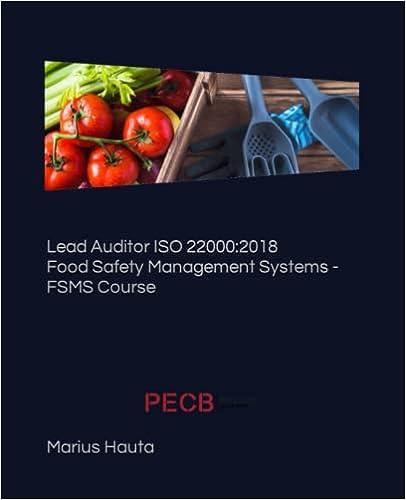Question
Task Based on the brief provided above, and acting in the clients best interests, you are required to construct a hypothetical $1 million Australian equities
Task
Based on the brief provided above, and acting in the clients best interests, you are required to construct a hypothetical $1 million Australian equities portfolio for Mr McCleod. You are to assume the role of a portfolio manager and design appropriate investment strategies for him, carefully addressing the following:
1. Establish the portfolios investment strategies and management thereof. Note: this should align closely with the brief and key concepts specific to modern portfolio theory, market efficiency, and risky asset pricing models. You should also clearly specify your 2 investment risk and size and style characteristics. For example, low, average or high beta stocks (or a combination), small cap, mid cap or large cap stocks (or a combination), and growth or value/income stocks (or a combination) (400 words)
2. Acknowledging key concepts pertaining to modern portfolio theory, market efficiency, and risky asset pricing models, conduct an overview and fundamental and technical analysis on each of the five (5) proposed ASX-listed investments for inclusion in the portfolio. Note: you should aim for approx. 400 words for each stock/REIT and make good use of illustrations (e.g., charts, tables, figures, etc.) to support their inclusion (2000 words)
3. Using illustrations, produce a detailed allocation breakdown of the proposed portfolio. This breakdown will include the names and ticker codes of the five (5) stocks/REITs, and the allocation in dollar and percentage values of the capital under management (i.e., $1 million inclusive of brokerage). Remember, illustrations do not count towards the word limit
4. Discuss how you will evaluate and communicate the ongoing design and performance of the portfolio (200 words)
5. Critique the portfolios investment strategies and management thereof. For instance, what do you (or do not) expect to work well with the portfolio you have designed for Mr McCleod and, based on what you have learned throughout the unit, what would you do differently for Mr McCleod in terms of the portfolio construction if given greater autonomy over the design process? (400 words).
As the available investment universe is restricted to just ASX-listed stocks and REITs, you will not be able to trade ETFs, bonds, investment funds, commodities, currencies, cryptocurrencies, or derivatives. This obviously comes at the expense of asset class diversification and overall risk mitigation, but is necessary for the task at-hand, particularly given time constraints and size of the assignment. Also, you are NOT permitted to hold more than 25% of your available capital (e.g., $1 million) in one stock/REIT. Further, you should attempt to minimise the number of stocks/REITs selected for the portfolio. To keep this task manageable, you must only have five (5) ASX-listed stocks/REITs in your portfolio. Note: There is no need to consider McCleods superannuation fund as part of or in addition to the $1 million Australian equities portfolio for Mr McCleod and you can ignore any taxation implications associated with his financial position.
Be as specific as possible in terms of your selections and the percentage of funds invested in each stock/REIT. Attempt to make selections that are appropriate given the current investment climate, and fully utilise the unit materials and other resources available to you. It is also important to remain informed regarding the current economic climate, political and corporate events occurring in the Australian and international marketplaces. Another effective method for this task is to employ a top-down fundamental approach (including macro evaluations of the aggregate market/economy and sectors/industries and a micro evaluation of the companies (including share valuations)) and browse relevant financial web sites and media for insights/information. A technical analysis of the respective stocks/REITs would then closely follow. Finally, making a selection based on a hunch or dart board investment approach will not score well for this assignment. If you cannot justify the stock/REIT selection then do not recommend it for the portfolio. 3 Other points for noting Margin lending is not permitted in this assignment. Brokerage is set at 1% of the total proposed trade value. Your proposed trades plus brokerage cannot exceed the allocated $1 million. Students are to construct long only portfolios. Short selling or shorting is not permitted.

Step by Step Solution
There are 3 Steps involved in it
Step: 1

Get Instant Access to Expert-Tailored Solutions
See step-by-step solutions with expert insights and AI powered tools for academic success
Step: 2

Step: 3

Ace Your Homework with AI
Get the answers you need in no time with our AI-driven, step-by-step assistance
Get Started


